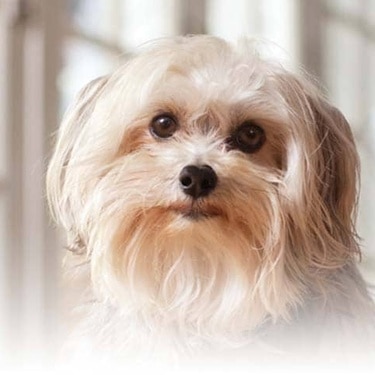
-
Find the right food for your petTake this quiz to see which food may be the best for your furry friend.Find the right food for your petTake this quiz to see which food may be the best for your furry friend.Featured products
 Adult Wet Dog Food with Beef
Adult Wet Dog Food with BeefHill's Science Plan Adult Multipack Wet Dog Food with Chicken, Beef & Turkey are complete premium pet foods for adult dogs from 1 year. Your dog will love these deliciously smooth and savoury minced loaves, formulated for balanced nutrition and overall health.
Shop Now Mature Adult Dog Food
Mature Adult Dog FoodHill's Science Plan Mature Adult Multipack Wet Dog Food with Chicken & Beef are complete premium pet foods for mature adult dogs from 7 years. Your dog will love these deliciously smooth and savoury minced loaves, formulated to deliver the appropriate amount of energy to support the needs of adult dogs.
Shop Now Puppy Food
Puppy FoodHill's Science Plan Puppy Multipack Wet Dog Food with Chicken & Beef are complete premium pet foods for growing puppies from weaning until 1 year old and for pregnant and nursing dogs. Your puppy will love these deliciously smooth and savoury minced loaves, formulated for balanced nutrition and overall health.
Shop NowFeatured products Mature Adult Wet Cat Food with Chicken
Mature Adult Wet Cat Food with Chicken
Tender chicken chunks in gravy for mature adult cats. Made with easy-to-digest ingredients, high-quality protein for lean muscle maintenance and antioxidant vitamins C+E for optimal health.
Shop Now Light Adult Multipack Wet Cat Food with Chicken & Ocean Fish
Light Adult Multipack Wet Cat Food with Chicken & Ocean FishTender chicken chunks in gravy for cats, with L-carnitine and fewer calories for ideal weight management. Packed with high-quality protein, omega-6s, and vitamin E for shiny fur and healthy skin.
Shop Now Adult Multipack Wet Cat Food with Beef, Ocean Fish & Chicken
Adult Multipack Wet Cat Food with Beef, Ocean Fish & ChickenTender chunks in gravy for cats, with high-quality protein to maintain lean muscle. With vitamin E and omega-3s & -6s for healthy skin and balanced minerals to support healthy vital organs.
Shop Now -
Dog
- Dog Tips & Articles
-
Health Category
- Weight
- Food & Environmental Sensitivities
- Urinary
- Digestive
- Joint
- Kidney
-
Life Stage
- Puppy Nutrition
- Adult Nutrition
- Senior Nutrition
Cat- Cat Tips & Articles
-
Health Category
- Weight
- Skin & Food Sensitivities
- Urinary
- Digestive
- Kidney
-
Life Stage
- Kitten Nutrition
- Adult Nutrition
Featured articles The Incredible Science Behind Your Pet's Microbiome
The Incredible Science Behind Your Pet's MicrobiomeLearn what your pet's microbiome is, how it contributes to your pet's gut and overall health, and why nutrition is important in maintaining healthy microbiomes.
Read More The Right Diet For Your Pet
The Right Diet For Your PetIn people, the right diet is very important. If you are eating the wrong way for your metabolism, activity level, age and lifestyle you could end up with health issues.
Read More Show some love with wet foods: a great choice for pets with health issues
Show some love with wet foods: a great choice for pets with health issuesShow some love with wet foods: a great choice for pets with health issues.
Read More -


Monitoring weight throughout the life of your dog is a great health habit to get into from the word go. In this article, we’ll talk about how you can weigh your dog at home and why it’s important…
Why is it important to weigh your dog?
Slim animals live longer and have a lower risk of weight-related health conditions. Watching their weight, then, will help give you the maximum time possible with your furry friend, and will help you to make sure that their quality of life remains high.
Changes in weight in both directions can be early signs of disease, so being able to spot weight gain or loss early on can help you address any health problems as quickly as possible. If you get your dog as a puppy, monitoring weight is also important for tracking if they are growing at a healthy rate.
What is a good weight for a dog?
The ideal weight for a dog depends on different factors like breed or age. Your vet will be able to tell you the healthy weight range for your dog, and will also be able to tell you about something called Body Condition Score (BCS). This is a visual assessment of your dog’s body that can help you to quickly identify signs of excess weight (or weight loss).
Puppies are supposed to gain weight as they grow, of course, but it’s important that they don’t gain too much. Slim puppies tend to become slim adult dogs, while overweight puppies are predisposed to excess weight in adulthood, too. Your vet will be able to give you a growth chart on which to track your puppy’s weight to make sure they’re growing at a healthy rate.


Tasty Tips
How to weigh your dog at home
Puppies should ideally be weighed every two weeks, while adult dogs can be weighed once a month. There are two main ways to weigh your dog at home:
If your dog is small enough, place them directly on your bathroom scales. Holding a tasty treat will help with this. Make sure that when they are sitting down, their legs or bottom are not hanging over the edge and touching the floor (the tail probably won’t make much difference though). If they are small, young and too wriggly, you can place them in a dog or cat carrier and weigh them in there, and then weigh the basket again without them in it. The difference between the two is the weight of your dog. Just remember not to remove any bedding or other items from the carrier before you weigh it again.
Hold your dog and weigh you and them together. Stand on the scales yourself and note down your weight. It doesn’t matter if you’re clothed or not, but it’s probably better if you are! Then pick up your dog and get back on the scales. The combined weight minus your weight gives you the dog’s weight. Simple!
Please only do this if your dog is light enough for you to easily pick up without injuring yourself! Also bear in mind that being picked up is very unusual for many dogs and can be very stressful. Please only do this if your dog is calm and relaxed being held. If they panic or struggle, one or both of you could get hurt.
Weighing your dog at the vet clinic
If your dog is too wriggly, heavy or stressed for you to weigh them safely at home, it’s worth knowing that you can often get them weighed at your vet clinic. Most vets are more than happy for you to pop in and weigh your dog whenever you want to, usually free of charge. Making these regular little visits to the vets is not only the easiest way for you to weigh your dog on the big, floor scales, but it builds a really positive association between the clinic and your dog. If your dog has lots of trips to the vets where nothing bad happens and they simply get to say hello to everyone, and maybe get a treat from you or the nurse, they will also be happy to go to the vets when they are ill or need their vaccinations.
Reviewed by Dr. Hein Meyer, DVM, PhD, Dipl-ECVIM-CA


One of our staff authors prepared this article for you
Related products

Hill's Science Plan Adult Multipack Wet Dog Food with Chicken, Beef & Turkey are complete premium pet foods for adult dogs from 1 year. Your dog will love these deliciously smooth and savoury minced loaves, formulated for balanced nutrition and overall health.

Hill's Science Plan Puppy Multipack Wet Dog Food with Chicken & Beef are complete premium pet foods for growing puppies from weaning until 1 year old and for pregnant and nursing dogs. Your puppy will love these deliciously smooth and savoury minced loaves, formulated for balanced nutrition and overall health.

Hill's Science Plan Mature Adult Multipack Wet Dog Food with Chicken & Beef are complete premium pet foods for mature adult dogs from 7 years. Your dog will love these deliciously smooth and savoury minced loaves, formulated to deliver the appropriate amount of energy to support the needs of adult dogs.

Hill's Science Plan Hypoallergenic Adult Wet Dog Food with Salmon is a complete premium pet food for all adult dogs from 1 year. This savoury tinned loaf is specially formulated for dogs with delicate skin and stomachs. It features a single novel animal protein source and is grain-free.
Related articles

Just like every other pet owner, vets are responsible for giving their pets the best possible nutrition, exercise and care needed to keep them healthy and happy.

Understand the potential causes of excessive dog itching and how to address them. Seek relief for your dog with expert advice from Hill's Pet UK.

Discover the causes, signs, and treatments of kidney disease in dogs and find methods of supporting your dog's kidney health. Learn more at Hill's Pet UK.

Dog obesity is a significant problem - learn more about helping your dog become trimmer and healthier through improved nutrition.

Put your dog on a diet without them knowing
Our low calorie formula helps you control your dog's weight. It's packed with high-quality protein for building lean muscles, and made with purposeful ingredients for a flavourful, nutritious meal. Clinically proven antioxidants, Vitamin C+E, help promote a healthy immune system.
Put your dog on a diet without them knowing
Our low calorie formula helps you control your dog's weight. It's packed with high-quality protein for building lean muscles, and made with purposeful ingredients for a flavourful, nutritious meal. Clinically proven antioxidants, Vitamin C+E, help promote a healthy immune system.

